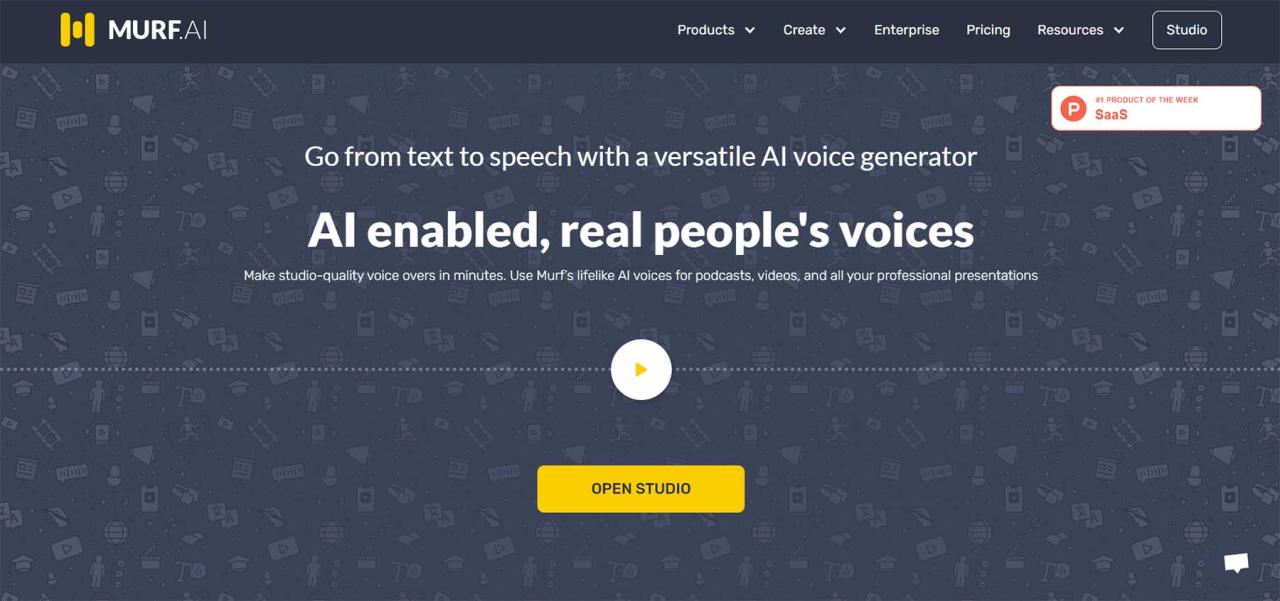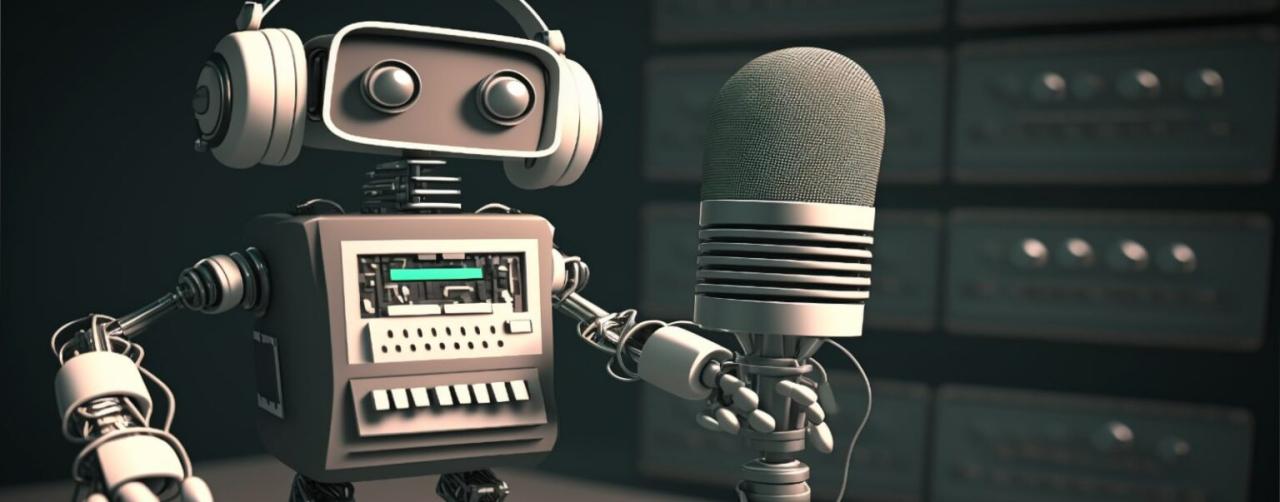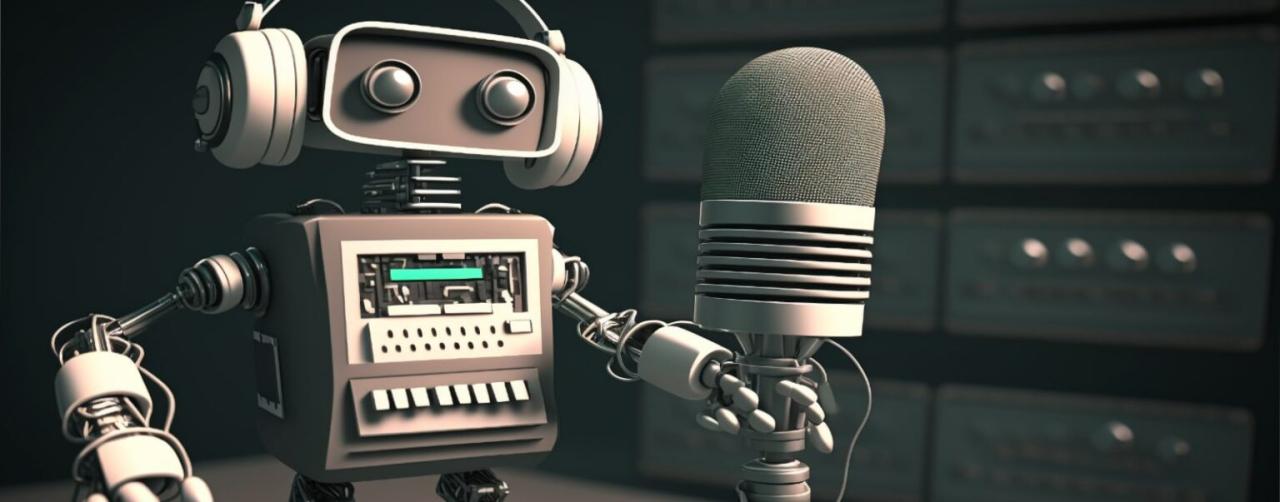Best AI voice generator for realistic human voices: Want to create incredibly lifelike audio? This isn’t science fiction anymore. We’ll explore the amazing world of AI voice generation, from its humble beginnings to the surprisingly realistic voices available today. We’ll dive into the features that make these generators so impressive, examine some top contenders, and discuss the exciting (and sometimes ethically tricky) applications of this technology.
We’ll cover everything from the underlying tech – think WaveNet and Tacotron – to the ethical considerations of using these powerful tools. Get ready to discover how AI is changing the way we interact with audio, and perhaps even find the perfect voice for your next project.
AI Voice Generation: A Deep Dive into Realistic Human Voices

The ability of computers to generate human-like speech has come a long way. From robotic-sounding text-to-speech to incredibly realistic voice cloning, the evolution of AI voice generation is a fascinating journey. This article explores the technology behind realistic AI voice generators, their applications, ethical considerations, and future trends.
A Brief History of AI Voice Generation

Early attempts at AI voice generation produced synthesized speech that was often robotic and unnatural. Systems like the DECtalk (1980s), while groundbreaking for their time, lacked the nuanced intonation and natural flow of human speech. The limitations stemmed from relatively simple algorithms and limited processing power. The evolution towards realism involved significant advancements in algorithms, particularly with the advent of deep learning and neural networks.
This shift allowed for the processing of vast datasets of human speech, leading to more natural-sounding voices.
Key Features of Realistic AI Voice Generators
Several key features differentiate realistic AI voice generators from their less sophisticated predecessors. The most crucial aspect is the ability to replicate the natural rhythm and intonation of human speech. This includes accurate pauses, variations in pitch and tone, and the subtle emotional inflections that make speech engaging and believable. Advanced algorithms, particularly deep learning models like WaveNet and Tacotron, are instrumental in achieving this level of realism.
These models learn from massive datasets of human speech, capturing the complexities of pronunciation, accent, and emotional expression.
| Generator Name | Naturalness Rating (1-5) | Voice Variety | Pricing | Ease of Use |
|---|---|---|---|---|
| Murf.ai | 4 | High | Subscription-based | Easy |
| Descript | 4 | High | Subscription-based | Easy to Moderate |
| ElevenLabs | 5 | High | Credit-based | Easy |
| Amazon Polly | 3 | Medium | Pay-as-you-go | Easy |
| Google Cloud Text-to-Speech | 4 | Medium | Pay-as-you-go | Easy |
Popular AI Voice Generators: A Comparison
Several leading AI voice generators offer high-quality, realistic voices. A comparison reveals strengths and weaknesses regarding voice quality and customization.
- Murf.ai: Excellent naturalness, wide voice variety, user-friendly interface. Can be expensive for extensive use.
- Descript: Strong naturalness, good voice variety, integrates well with other audio/video editing tools. Steeper learning curve compared to Murf.ai.
- ElevenLabs: Exceptional naturalness, especially known for its realistic and expressive voices, credit-based pricing can be cost-effective for smaller projects.
- Amazon Polly: Reliable and widely accessible, good for basic applications. Voice variety and naturalness are less impressive compared to others.
- Google Cloud Text-to-Speech: High-quality voices, good integration with Google services. Customization options might be limited compared to some competitors.
Applications of Realistic AI Voice Generators
Realistic AI voice generators find applications across diverse industries. Their ability to create natural-sounding speech opens up numerous possibilities.
- Entertainment: Creating voiceovers for video games, audiobooks, animated films.
- Education: Developing interactive learning materials, creating personalized tutoring systems.
- Customer Service: Powering chatbots and virtual assistants, providing automated responses.
For example, imagine an educational app using an AI voice generator to narrate historical events in the voice of a renowned historian, enhancing the learning experience. The flexibility and personalization offered by these generators make them invaluable tools.
Technical Aspects of Realistic Voice Generation
Techniques like WaveNet and Tacotron are crucial in generating realistic voices. WaveNet uses a deep neural network to directly model the raw waveform of audio, resulting in high-fidelity audio. Tacotron, on the other hand, uses a sequence-to-sequence model to generate spectrograms, which are then converted to audio using a vocoder. Large datasets of human speech are essential for training these models, ensuring accurate pronunciation, intonation, and emotional expression.
Finding the best AI voice generator for realistic human voices can be tricky, but it’s worth the effort for creating compelling audio content. You might need to consider the global context, like the differing perspectives on the HMPV outbreak – check out this article for more: China Calls HMPV Outbreak ‘Winter Occurrence’, India Says ‘Don’t – before deciding which voice best suits your project’s tone.
Ultimately, the right AI voice generator will depend on your specific needs and desired level of realism.
Challenges include generating voices with consistent emotional range and handling diverse accents and speaking styles.
Ethical Considerations
The power of realistic AI voice generation raises ethical concerns, particularly regarding deepfakes and potential misuse. The technology could be used to create convincing fake audio recordings, leading to misinformation and identity theft.
- Ethical Consideration: Potential for misuse in creating deepfakes and spreading misinformation.
- Solution: Development of detection technologies and stricter regulations on the use of AI voice generators.
- Ethical Consideration: Privacy concerns regarding the use of voice data for training models.
- Solution: Implementing data anonymization techniques and obtaining informed consent from individuals.
Future Trends in AI Voice Generation, Best AI voice generator for realistic human voices
Future advancements are likely to focus on improving the realism and expressiveness of AI voices. We can anticipate more sophisticated models capable of generating voices with a wider range of emotions and accents, even mimicking specific individuals with higher accuracy. This could lead to hyper-realistic voice cloning and personalized voice assistants that seamlessly integrate into our daily lives.
The integration of AI voice generation with other technologies, such as virtual and augmented reality, will further expand its applications across various industries.
Final Review

AI voice generation has come a long way, offering increasingly realistic and versatile options for various applications. From revolutionizing customer service to enhancing entertainment experiences, the potential is vast. While ethical considerations remain important, the future of AI voice technology looks incredibly promising, with advancements constantly pushing the boundaries of realism and expressiveness. Now, go forth and experiment with these incredible tools!
User Queries: Best AI Voice Generator For Realistic Human Voices
What’s the difference between a text-to-speech (TTS) system and a realistic AI voice generator?
Picking the best AI voice generator for realistic human voices can be tricky, but it’s worth the effort! Imagine using one to announce the amazing news – check out this article on how Real Madrid become first team to reach 5000 LaLiga points – and you could have a super realistic AI voice narrate the milestone.
The right AI voice generator can really elevate your projects, making them sound professional and engaging.
Traditional TTS often sounds robotic. Realistic AI voice generators use advanced techniques like deep learning to create more natural-sounding voices with better intonation and emotion.
Are there free AI voice generators?
Finding the best AI voice generator for realistic human voices can be tricky, but it’s worth the effort for projects needing natural-sounding narration. Think about needing to create an audio recap of a hockey game, like this one: Call of the Wilde: Montreal Canadiens fall to Blackhawks in Chicago ; a top-tier AI voice could really bring the game’s excitement to life.
So, choosing the right AI voice generator is key to getting that perfect, professional sound.
Yes, some offer free tiers with limitations on usage or voice options. However, most high-quality generators require a paid subscription for full access.
How much data is needed to train a realistic AI voice model?
Training these models requires massive datasets of voice recordings, often many hours of speech from a single voice.
Can I use these generators to create deepfakes?
Technically, yes. However, doing so without consent is unethical and potentially illegal. It’s crucial to use these technologies responsibly.
